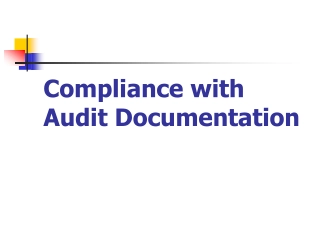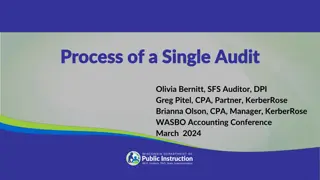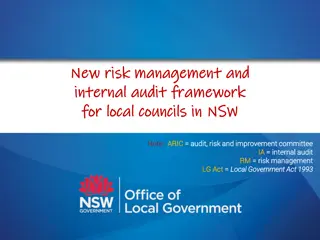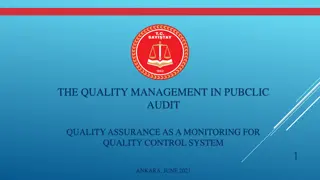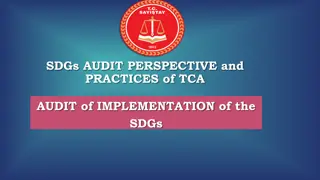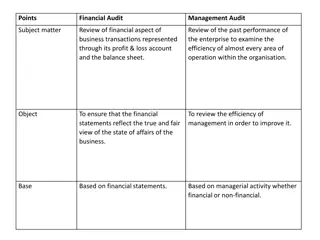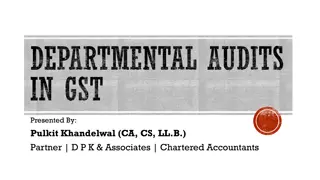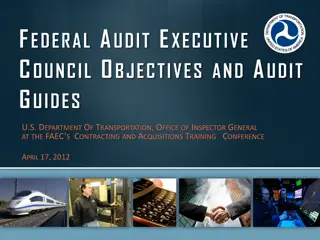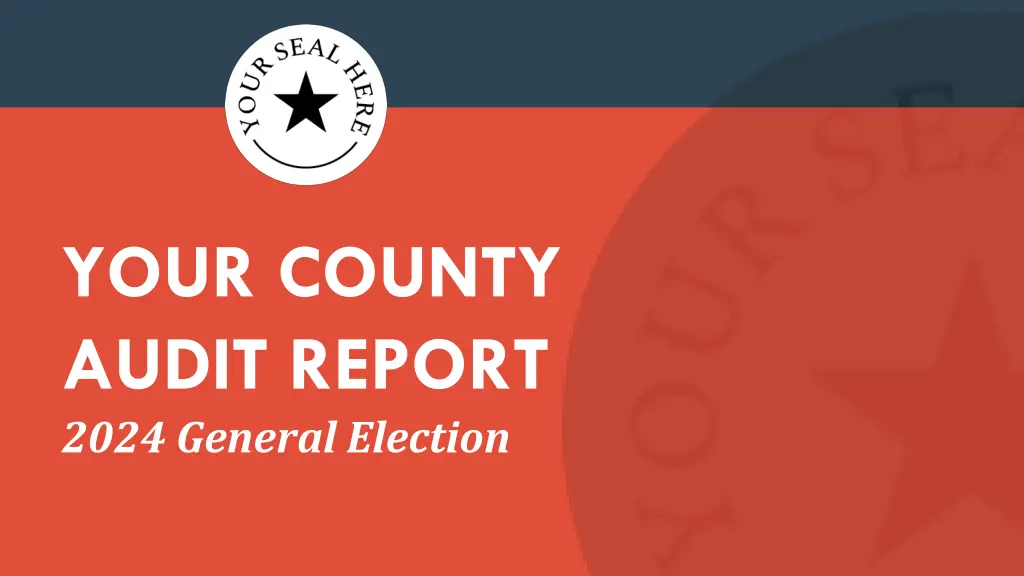
Understanding Fixed Percentage Audits in Election Processes
Delve into the concept of fixed percentage audits, a post-election procedure aimed at ensuring the accuracy of voting equipment and the tallying of ballots. Discover why these audits are vital and get insights into the audit process through bipartisan teams and random selections of ballots and precincts.
Download Presentation

Please find below an Image/Link to download the presentation.
The content on the website is provided AS IS for your information and personal use only. It may not be sold, licensed, or shared on other websites without obtaining consent from the author. If you encounter any issues during the download, it is possible that the publisher has removed the file from their server.
You are allowed to download the files provided on this website for personal or commercial use, subject to the condition that they are used lawfully. All files are the property of their respective owners.
The content on the website is provided AS IS for your information and personal use only. It may not be sold, licensed, or shared on other websites without obtaining consent from the author.
E N D
Presentation Transcript
YOUR COUNTY AUDIT REPORT 2024 General Election
What is a fixed percentage audit? A post-election audit where a predetermined percentage of ballots, precincts or equipment is randomly selected for a hand-count. The audit hand-count is then compared to the original machine count.
Why do we conduct fixed percentage audits? We want to ensure that the voting equipment was programmed accurately and tallied ballots correctly.
The Basics November #, 2024 ## bipartisan audit teams Your County Election Office Fixed Percentage Audit
By the Numbers #% [early ballots] audited ### [early ballots] counted #% [precincts] audited ### total Election Day precincts ### [precincts] audited ### [early ballots] audited 3 votes or 1% designated margin for [precincts] and [early ballots]
By the Numbers # discrepancies identified and investigated during the audit ## bipartisan hand-count audit teams retrieved randomly selected ballots, examined and counted them ###% match match between the audit hand-count and tabulation equipment count # members per audit team no more than two members from one political party
Audit Process STEP 1: Party chairs take turns randomly selecting batches for the early ballot hand-count.
Audit Process, continued STEP 2: Random selection of precincts for the Election Day ballot hand-count
Audit Process, continued STEP 3: Random selection of ballot contests to be hand-counted
Audit Process, continued STEP 4: Manual hand-count of each contest for each batch of early ballots selected
Audit Process, continued STEP 5: Manual hand-count of Election Day ballots for each voting location selected
Audit Process, continued STEP 6: Determination of whether the differences between the original results and the hand-count exceed the designated margin
Audit Process, continued STEP 7: If the designated margin is not exceeded, the hand-count concludes, the county election director submits a report to the secretary of state and the original tabulation equipment counts are deemed the official results of the election.
Audit Process, continued STEP 8: If the designated margin is exceeded, audit board members follow the statutory requirements for expanding the hand-count.
Audit Process, continued STEP 9: Audit boards sign tally sheets confirming that the total number of ballots hand-counted and that the results of each contest match the original tabulated results.
Key Takeaways Bipartisan teams All audit teams were made up of members from different political parties. This helped observers to recognize that audits are not political exercises. Audits are conducted to confirm that the equipment accurately counted votes and to verify the election results. Security All ballots were logged and in secure storage until the randomly selected ballots were retrieved for the audit. Only audit team members could access the selected ballots during the audit. As soon as the audit concluded, the selected ballots were returned to secure storage. Each step was logged and conducted in teams. Randomness By rolling 20 different 10-sided dice to create a 20-digit seed and then tasking the computer to generate random sequences of numbers from that stating point, the secretary of state ensured that the ballots selected for the audit were random.

